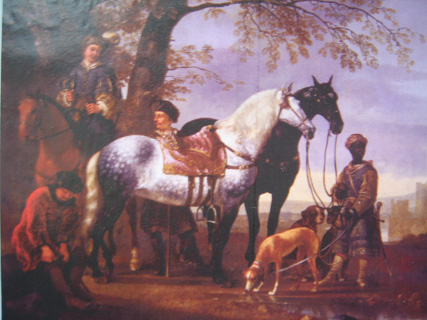Today is the last Sunday before the hunting ban comes into operation, so this week’s picture is The Huntsmen Halted, by the Dutch seventeenth-century painter Aelbert Cuyp. The work was probably painted in the early 1650s and may be seen at the Barber Institute in
Cuyp is now widely regarded as one of the finest artists of the so-called “Golden Age” of Dutch painting, although his work remained comparatively little known and appreciated during his lifetime, and indeed for a century or more after his death. He was born and raised in the town of
In 1769, the publisher and entrepreneur John Boydell put the seal on Cuyp’s modern reputation by including his work in a lavish volume of prints etched after Old Master paintings. The anonymous author of that book’s commentary proudly trumpeted the part played by his fellow-countrymen in alerting the wider world to Cuyp’s genius: “It is astonishing that the works of so great a master … should have been almost totally unknown, or...


